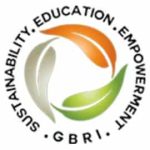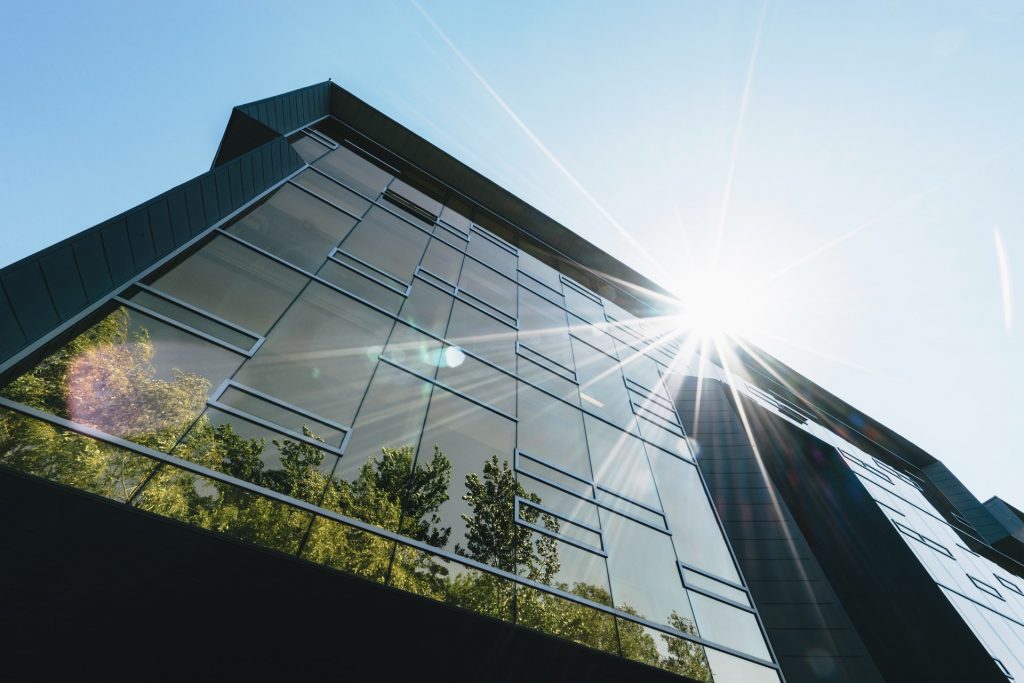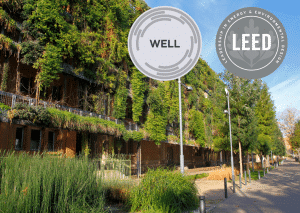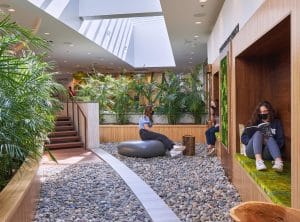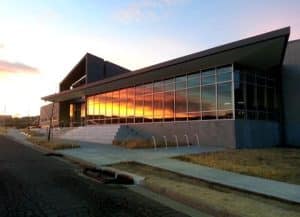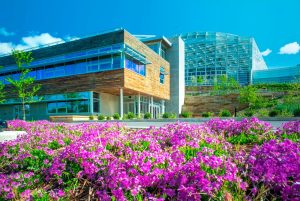What is Green Building?
With terms like climate change and sustainability being extensively used by the media across the globe, chances are you must have heard about green buildings too, and how they are trying to minimize the impact of the building sector on our environment. According to experts, the building and construction sector is responsible for almost 39% of the global CO2 emissions.
Due to this massive carbon footprint, people have started to realize the importance of constructing green buildings.
In simple terms, a ‘green’ building is a building that minimizes or eliminates negative aspects and has the ability to create positive impacts on our natural environment through its design, construction and operation. Almost all green buildings are sustainable, preserve precious natural resources and improve our quality of life.
Now the question arises, how does a building become ‘green’? This is possible through creation of green building rating systems that prompt the buildings to improve their environmental performance through sustainable design and operations. Once a building succeeds in achieving a set number of parameters, it is certified as a ‘green building’.
What are the 7 components of green building?
Listed below are the seven main components of green building:
1. Energy Efficiency
Energy efficiency is the key to making a building a finely tuned, lean, green machine. A green building design takes maximum advantage of the sun and wind to heat, light, and cool the building affordably. This will help you to choose smaller, efficient HVAC systems, lighting, and appliances. Renewable energy, where feasible, should be used.
2. Water Efficiency
To conserve finite freshwater resources and reduce utility bills, green buildings install water-efficient appliances and plumbing fixtures, feature landscaping with drought-resistant plants and efficient irrigation, and put rainwater and graywater to use. To soak up more of the stormwater runoff that plagues rivers and streams, green buildings can replace asphalt and turf with porous pavement and trees; then consider rain barrels, rain gardens, and green roofs.
3. Green, sustainable Materials
Green, high quality building materials that minimize or eliminate indoor air quality concerns, avoid toxins, and greatly reduce waste are now widely available, often from local manufacturers. Recycled-content and pre-fabricated products reduce material use, cut costs, and often perform better than traditional alternatives.
4. Waste Reduction
Green buildings reduce, reuse, and recycle construction and demolition waste to cut costs and improve building quality. They are designed for efficient use of materials and for durability, avoiding future waste. With the right setup, you can recycle over 70 percent of some waste materials on the construction site, and residents can recycle 100 percent of others in their homes.
5. Indoor Air Quality
Indoor air quality significantly impacts resident health and comfort – essential goals for any building. Achieving a high quality indoor environment requires careful design, construction, and materials choices, and thus strong coordination among the building team. Indoor air quality centers on well-designed ventilation and moisture control, which goes hand in hand with energy efficiency and building durability. Ongoing maintenance is important, of course, as is a commitment to finding alternatives to toxic materials and finishes.
6. Community
Green buildings and developments support strong communities by giving neighbors places to meet, establishing a sense of place and safety, and creating spaces for pedestrians and kids, rather than cars. Successful and sustainable designs involve residents and community members from the planning stage all the way through to operation and maintenance.
7. Commissioning
Commissioning is the process of making sure that a building works right. By systematically evaluating and adjusting building systems to function together as designed, commissioning optimizes efficiency, health, and comfort. A commissioning agent–often a third-party architect or engineer–gives advice during the design phase and follows through with testing during construction and training of operations and maintenance staff.
Also Read:
What are green building rating systems?
Construction has both direct and indirect environmental impacts. As a result, a large number of green building rating systems have been established to help mitigate these impacts through the encouragement, measurement and recognition of sustainable building performance.
The first ever green building rating system in the world was launched in 1990 when the concept of sustainable design started gaining popularity. This rating system was the Building Research Establishment’s Environmental Assessment Method (BREEAM). After that, many others followed suit and currently, there are quite a few green building certification programs like:
LEED (Leadership in Energy and Environmental Design)
In 2000, the U.S. Green Building Council (USGBC) developed and released guidelines for implementing practical green building solutions through its Leadership in Energy and Environmental Design (LEED) rating system for new buildings. Since that first release, LEED has continued to grow in prominence and to include rating systems for existing buildings and entire neighborhoods.
Today, LEED is an internationally recognized green building certification system that provides third-party verification that a particular building or complex was designed and constructed keeping in mind the following parameters:
- Maximum energy savings
- Efficient use of water
- Reduced greenhouse gas emissions
- Healthier indoor air quality
- Increased use of recycled materials
- Optimum utilization of resources and sensitivity to their impacts
- Reduced maintenance and operation costs
ENERGY STAR
This program is primarily focused on energy use; setting standards that are recognized internationally for energy efficient consumer products. Run by the U.S. Environmental Protection Agency in conjunction with the U.S. Department of Energy, ENERGY STAR compares homes to certify those that are at least 15% more energy efficient than homes built to the 2004 International Residential Code (IRC) and include additional energy saving features to be 20-30% more efficient than standard homes.
ENERGY STAR also provides an energy performance rating system applied to buildings, and recognizes top performing ones with the ENERGY STAR. This certification lasts one year, and not all building types are eligible.
Further Read:
GREEN GLOBES
Green Globes is an online green building rating and certification tool that is used primarily in Canada and the USA. In Canada, there are Green Globes modules for:
New Construction/Significant Renovations
Commercial Interiors (i.e. Office Fit-ups)
These modules can be used for a wide range of commercial, institutional and multi-residential building types including offices, school, hospitals, hotels, academic and industrial facilities, warehouses, laboratories, sports facilities and multi-residential buildings.
Green Globes for Existing Buildings was developed in 2000 by ECD Energy and Environmental Canada. Green Globes for New Buildings Canada followed shortly thereafter, with the support of the Canadian Department of National Defense and Public Works and Government Services. In 2004, the system was adapted for the USA, where it is administered by the GBI (Green Building Initiative).
Also Read:
NATIONAL GREEN BUILDING STANDARD
This certification, developed and administered by the National Association of Home Builders (NAHB), establishes green building, construction practices, and performance levels for residential areas. It covers both new construction and renovations of all residential types; including single-family homes, multi-family complexes, and mixed-use buildings. Homes with this certification must incorporate the following six categories:
- Lot Development
- Resources Efficiency
- Energy Efficiency
- Water Efficiency
- Indoor Environmental Quality
- Operations and Maintenance
GREENGUARD
GREENGUARD Certification is part of UL Environment, a business unit of UL (Underwriters Laboratories). GREENGUARD certification helps manufacturers create and buyers identify interior products and materials that have low chemical emissions, improving the quality of the air in which the products are used.
So this is basically a certification program that focuses greatly on indoor air quality, promoting low-emitting building materials, paints and finishes, cleaning products, furnishings, electronics, and other consumer products.
What are the 5 LEED rating systems?
Achieving LEED certification is the best way to let the world know that your building project is actually ‘green’. It is a solid and compelling proof to your clients and public at large that you take your responsibility towards the environment seriously and that your building has been designed to minimize environmental impact.
In LEED, buildings get certified under 5 different LEED rating systems:
- LEED AP Building Design + Construction – This rating system includes guidelines for new buildings and old buildings undergoing major renovations.
- LEED AP Operations + Maintenance – This category can be used by building owners and operators to measure operations and maintenance as well as make minor improvements.
- LEED AP Interior Design + Construction – This rating system was designed specifically for tenants leasing a portion of a larger building.
- LEED AP Neighborhood Development – This category integrates the principles of smart growth, urbanism, and green building into the first national program for neighborhood design.
- LEED AP Homes – This was specifically designed for single and multi-family residential structures that are three stories or less.
Further Reading:
- How to Pass the LEED Green Associate Exam
- 10 Reasons to Become LEED Accredited
- How to prepare for the LEED AP Exam
- How to Pass the WELL AP Exam
What is the difference between green building and sustainable building?
Often, the terms “green” and “sustainable” are used interchangeably. However, there are quite a few differences between the two. For example, a “green” building is not always “sustainable.”
A building is green when it helps reduce the footprint it leaves on the natural environment and on the health of its inhabitants. Green home design includes building for energy efficiency, including the use of renewable energy sources such as wind, water, or solar; creating a healthy indoor environment; implementing natural ventilation systems; and using construction materials that minimize the use of volatile organic compounds (VOCs) in the home.
The use of materials and resources that are sustainable, have low embodied energy, and produce a minimal environmental impact are key elements in green construction, as is the efficient use of water by appliances, faucets and shower heads, the recycling of greywater, and the reuse of rain water for landscaping and other non-potable purposes.
While the definition of green is relatively simple, sustainability has its roots in the term “sustainable agriculture,” which is the production of any plant or animal products using farming techniques that protect the environment, public health, human communities, and animal welfare without compromising future generations’ ability to do the same.
According to the United States Environmental Protection Agency, sustainability “creates and maintains the conditions under which humans and nature can exist in productive harmony, that permit fulfilling the social, economic and other requirements of present and future generations.”
The importance of sustainability lies in the “future” factors, which set a higher standard than those used to define green building.
Sustainable products reduce the impact on the environment by using responsibly-sourced products; those that are either completely renewable or sustainably harvested. A sustainably harvested source material is gathered in a way that does not affect the surrounding area, pollute the air or permanently reduce the supply.
A very clear example of the difference between “green” and “sustainable,” can be the popular “green” bamboo flooring. There is no doubt that a lumber product made from a renewable resource is green, but most bamboo flooring is made in China and transported by ships and trucks to different countries all around the world. The air pollution caused and the fuel used to transport the material turn it into the opposite of a sustainable material, since it contributes to global climate change.
With inputs from:
http://www.greenspacencr.org/building/pros/how_b/envision_b/elements_of_green_building.html
https://sourceable.net/difference-green-sustainable/
